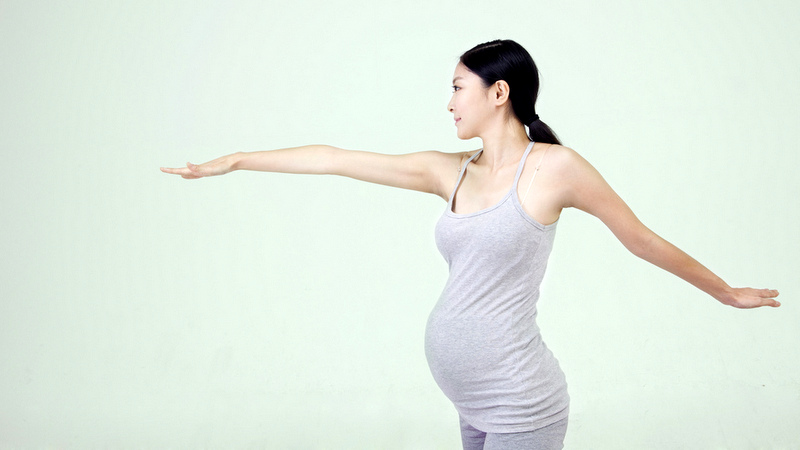Falling pregnant is a magical time in a woman’s life but it can also be quite overwhelming. There is a huge amount of information to take in and a host of regular medical appointments to attend. A common misconception is that if you haven’t engaged in exercise pre-pregnancy, then it isn’t safe to start. This has recently been shown to be incorrect and current guidelines actually recommend pregnant women stay active, provided they have clearance from their doctor or obstetrician. After all, pregnancy is a normal condition and not an illness!
During the first trimester many women feel too unwell to participate in their regular exercise program. This is completely normal and it is very important to listen to your body during this time. With hormone levels fluctuating, a regular workout completed one day might feel almost impossible the next. By allowing your body to guide you, it will gradually become easier to keep exercising throughout your pregnancy.
Things to take into consideration during pregnancy:
WEIGHT GAIN
With a woman’s body undergoing mechanical, physiological and emotional changes, the most obvious change during pregnancy is weight gain (of around 10-15kg on average). This causes the body’s centre of gravity to shift forward placing extra strain on the low back, pelvis and pelvic floor. For this reason any balance or agility work should be approached cautiously and, if possible, be replaced by more static movements.
LIGAMENTOUS LAXITY
The pelvis and lumbar spine are also affected by increased levels of relaxin, a pregnancy hormone that causes laxity (or looseness) of the ligaments that stabilise your hips and back. While this laxity is important for the birth process itself, take particular care with any agility work and avoid stretching, especially the adductors!
RESTING HEART RATE
Pregnancy causes the resting heart rate to increase and the maximum heart rate to decrease. If you are used to exercising in HR zones, remember that these cannot be translated to exercise during pregnancy. Instead, it is recommended to exercise at moderate intensity using your rate of perceived exertion (RPE) scale. Exercising at this level should feel somewhat hard – but you should still be able to talk without feeling exceedingly short of breath.
BLOOD PRESSURE
During the second trimester, development of blood vessels to supply the growing placenta causes blood pressure to fall. To minimise dizzy spells, pregnant women should avoid rapid changes of position, from lying to standing and vice-versa, from the fourth month onwards.

EXERCISE QUANTITY
Most experts agree that exercising for three to six days per week for 30 to 60 minutes per workout keeps you in good shape. However, the amount of exercise you can comfortably maintain will depend on factors including your fitness level, how the pregnancy is progressing and the intensity and duration of your pre-pregnancy exercise program. During the third trimester, no more than three sessions of vigorous exercise per week are recommended.
PRECAUTIONS
If you experience any of the following symptoms, stop exercising immediately and talk to your midwife or doctor:
- Any type of significant pain
- Contractions
- Dizziness or feeling faint
- Rapid heartbeat
- Shortness of breath out of proportion to the exercise you’re doing
- Vaginal bleeding
Some generally safe forms of exercise during pregnancy include:
- Walking
- Swimming and aqua-aerobics
- Pilates
- Stationary cycling
- Strength training (with low weights and medium-high repetitions)
- Yoga
If already part of your pre-pregnancy exercise program, jogging or running is fine too, but should be discontinued during the 2nd and 3rd trimester due to the impact on the pelvic floor and pelvis.
After a normal vaginal delivery gentle exercise including pelvic floor exercises, abdominal exercises and walking can be commenced when comfortable. More intense exercise should be delayed for up to six weeks to allow sufficient recovery time for the pelvic floor muscles and pelvic joints affected by pregnancy and delivery. After caesarean section, six weeks recovery time is also recommended before returning to exercise, but only if the wound is well healed.
It is important to remember that there are many benefits to staying active throughout your pregnancy. If you have any questions or doubts about your exercise program, contact your health professional or speak to the team at Melbourne Osteopathy Sports Injury Centre. Pregnancy should be a happy and exciting time for all involved and the team at MOSIC are all here to help guide you through your pre natal journey.
If you would like to speak with our practitioners about your pre or post natal exercise program, please feel free to ask a question, contact us or email us at: [email protected]


